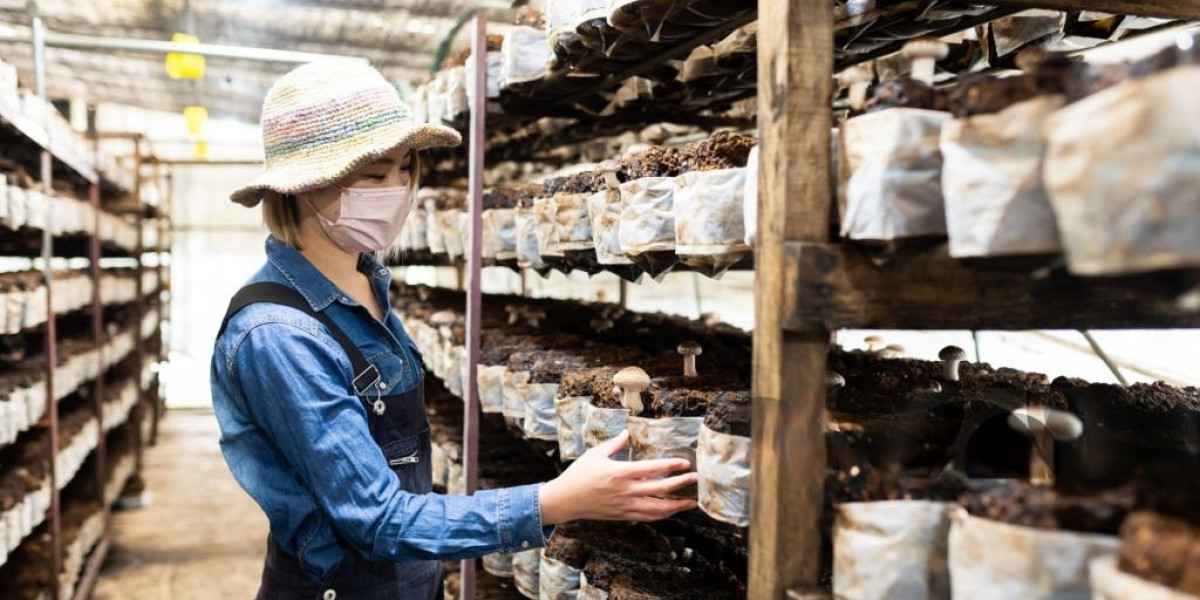Step-by-Step Guide to Growing Mushrooms at Home
Growing mushrooms at home can be a fun and fulfilling experience.
Here is a step-by-step guide on how to grow mushrooms at home.
Step 1: Choose Your Mushroom Type
Before you begin, decide which type of mushroom you want to grow. Some popular choices for beginners include:
- Oyster Mushrooms: Easy to grow and fast-growing.
- Shiitake Mushrooms: Known for their rich flavor, they take a bit longer to grow.
- White Button Mushrooms: Commonly found in grocery stores and relatively easy to grow.
Step 2: Gather Necessary Supplies
You’ll need different supplies depending on the type of mushroom you choose. Here’s a general list of what you’ll need:
- Mushroom Spawn: This is the mushroom equivalent of seeds.
- Substrate: The growing medium, such as straw, sawdust, or coffee grounds.
- Growing Containers: Containers or bags to hold the substrate and spawn.
- Sterilization Supplies: To keep your growing environment clean and free of contaminants.
- Spray Bottle: For maintaining humidity.
- Thermometer and Hygrometer: To monitor temperature and humidity levels.
Step 3: Prepare the Substrate
The substrate is the material in which the mushrooms will grow. Each type of mushroom has its preferred substrate:
- Oyster Mushrooms: Use pasteurized straw or coffee grounds.
- Shiitake Mushrooms: Hardwood sawdust or logs.
- White Button Mushrooms: Compost or manure.
Sterilize the substrate to kill any unwanted microorganisms. This can be done by boiling, steaming, or baking it.
Step 4: Inoculate the Substrate
Once the substrate is prepared and cooled, it’s time to inoculate it with mushroom spawn:
- Mix the Spawn and Substrate: Combine the mushroom spawn with the prepared substrate. Ensure it’s evenly distributed.
- Fill Containers: Place the inoculated substrate into your growing containers or bags. Pack it loosely to allow for air circulation.
Step 5: Incubate
The containers should be placed in a dark, warm area for the incubation period:
- Temperature: Keep the temperature between 65-75°F (18-24°C) depending on the mushroom type.
- Humidity: Maintain high humidity levels (around 80-90%).
- Darkness: Incubate in a dark place to encourage mycelium growth.
During this period, the mycelium (mushroom roots) will spread throughout the substrate.
Step 6: Fruiting
Once the substrate is fully colonized by the mycelium, it’s time to induce fruiting:
- Move to Fruiting Environment: Transfer the containers to a cooler, more humid environment with indirect light.
- Temperature and Humidity: Adjust the temperature to around 55-65°F (13-18°C) and maintain high humidity (90-95%).
- Light: Provide indirect light, such as a fluorescent light or natural light.
Step 7: Harvest
After a few weeks, mushrooms will start to form and grow:
- Harvest Time: Harvest mushrooms when the caps are fully opened but before they start to flatten or release spores.
- Harvesting Technique: Use a sharp knife to cut the mushrooms at the base or gently twist and pull them off.
Bonus: Tips for Success
- Cleanliness: Always maintain a clean environment to avoid contamination.
- Monitoring: Regularly check temperature and humidity levels.
- Patience: Growing mushrooms can take several weeks, so be patient and consistent.
Last Few Words:
Growing mushrooms at home can be a rewarding and fascinating experience that allows you to enjoy the flavors and benefits of fresh, organic produce right from your own kitchen.
With the right knowledge and equipment, anyone can successfully cultivate their mushrooms at home, regardless of their gardening experience.
Remember to choose the appropriate mushroom species for your skill level and desired end result, and follow the step-by-step instructions provided in this guide to ensure a successful harvest.
So why not give it a try? Happy DIY mushroom growing at home!








